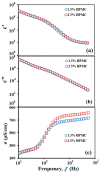Electro-Hydrodynamic Drop-on-Demand Printing of Aqueous Suspensions of Drug Nanoparticles
- PMID: 33138033
- PMCID: PMC7693662
- DOI: 10.3390/pharmaceutics12111034
Electro-Hydrodynamic Drop-on-Demand Printing of Aqueous Suspensions of Drug Nanoparticles
Abstract
We demonstrate the ability to fabricate dosage forms of a poorly water-soluble drug by using wet stirred media milling of a drug powder to produce an aqueous suspension of nanoparticles and then print it onto a porous biocompatible film. Contrary to conventional printing technologies, a deposited material is pulled out from the nozzle. This feature enables printing highly viscous materials with a precise control over the printed volume. Drug (griseofulvin) nanosuspensions prepared by wet media milling were printed onto porous hydroxypropyl methylcellulose films prepared by freeze-drying. The drug particles retained crystallinity and polymorphic form in the course of milling and printing. The versatility of this technique was demonstrated by printing the same amount of nanoparticles onto a film with droplets of different sizes. The mean drug content (0.19-3.80 mg) in the printed films was predicted by the number of droplets (5-100) and droplet volume (0.2-1.0 µL) (R2 = 0.9994, p-value < 10-4). Our results also suggest that for any targeted drug content, the number-volume of droplets could be modulated to achieve acceptable drug content uniformity. Analysis of the model-independent difference and similarity factors showed consistency of drug release profiles from films with a printed suspension. Zero-order kinetics described the griseofulvin release rate from 1.8% up to 82%. Overall, this study has successfully demonstrated that the electro-hydrodynamic drop-on-demand printing of an aqueous drug nanosuspension enables accurate and controllable drug dosing in porous polymer films, which exhibited acceptable content uniformity and reproducible drug release.
Keywords: biocompatible films; drop-on-demand printing; drug release profile; nanoparticles; poorly water-soluble drugs; precision dosage form.
Conflict of interest statement
The authors declare no conflict of interest. The funders had no role in the design of the study; in the collection, analyses, or interpretation of data; in the writing of the manuscript; or in the decision to publish the results.
Figures









References
-
- Personalized Medicine Coalition Personalized Medicine at FDA: The Scope & Significance of Progress in 2019. [(accessed on 6 September 2020)]; Available online: http://www.personalizedmedicinecoalition.org/Resources/Personalized_Medi....
Grants and funding
LinkOut - more resources
Full Text Sources

